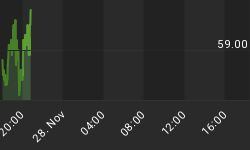With Co-Host Charles Hugh Smith
27 Minutes, 26 Slides
A flawed GDP formula currently hides the problems in the US economy associated with swollen and unrealistic levels of consumption. The fact that Investment has fallen and net exports are chronically negative has been recently 'papered' over by increased government expenditures. These distortions will soon be brought to the fore since a 71% consumptions level in the US can not longer be sustained and the cracks are showing.

How Did It Get To Such A Level?
Most developed countries have consumption levels approximating 50 - 55%. The US, reflective of a high standard of living, has sustained high levels of consumption for the last 30 years. This was based on:
- High Levels of Employment,
- A Strong Middle Class,
- Years of strong Domestic and Foreign Capital Investment,
- Low Levels of Per Capita Poverty,
- Industrial Strength resulting in Global Export Dominance,
- Public Policy that supported Private Investment and Business,
- Low Tax Levels.

Why a 70% Consumption Can't Be Sustained
The 70% Consumption level has peaked due to:
- Crushing Post Secondary Education Costs,
- The Shift from Defined Benefits Programs with Contributor Benefit Programs,
- Elevated Costs for Housing,
- Job shortages,
- 47.8M Americans or 15% of population on Food Stamps and 50M Americans below the poverty line,
- 110M Americans are on Welfare Programs (88M) or work for 'Government' while 110M working age Americans are not working (students etc.) and the remaining 95M are younger than 18 or over 65.

Peak Consumption Video - 27 Minutes, 26 Slides
Check out our extensive library of videos
20-40 Minute Shows with 25-50 Supporting Slides















